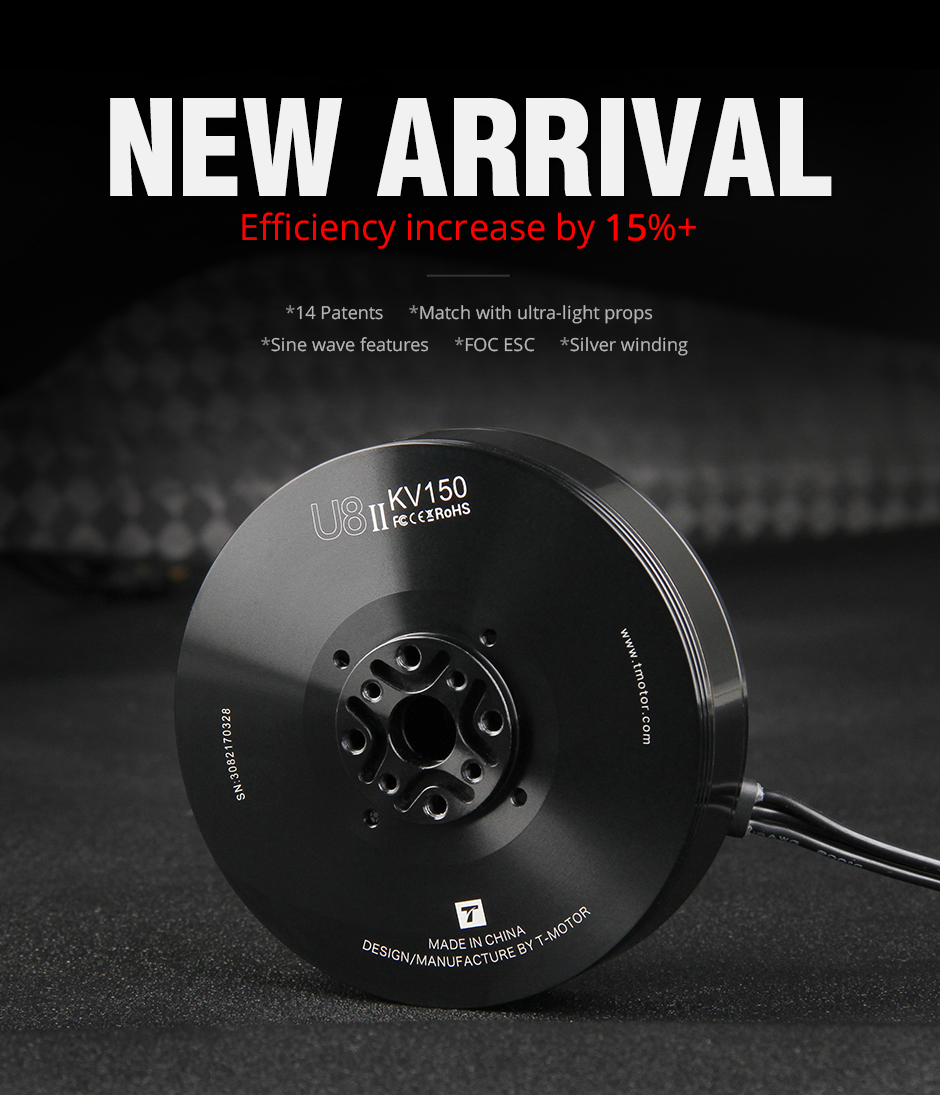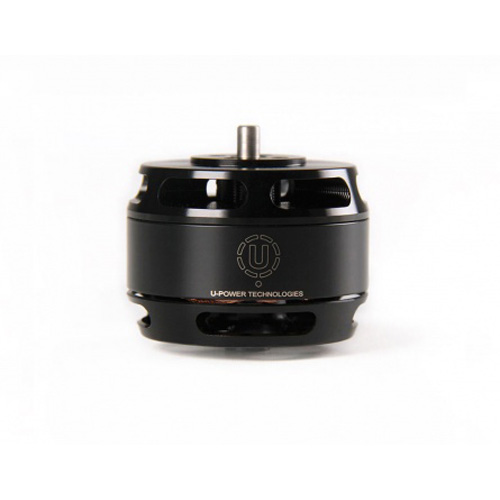U8Ⅱ KV190 drone motor
T-MOTOR is devoted to being the guiding star in UAV industry with “the Safer Propulsion System”. Technological innovation, win-win cooperation, integrity and service make T-MOTOR a reliable partner for drone manufacturer and distributors for long-term collaboration.
Product Description
U8Ⅱ KV190
$309.99
Available points:15000 Points ▏ Points reward:309 Points
• Flight time 5% longer
• Max. Thrust 7.3kg
• Motor protection IP55
• Motor service life-- 1500 flights (40mins/flight)
• ATA01123 prop adapter for P22inch prop

Drone motors are crucial components of unmanned aerial vehicles (UAVs), commonly known as drones. These motors provide the necessary thrust and power to lift and maneuver the drone in the air. They are typically electric motors, and there are several key factors to consider when choosing a drone motor:
-
Size and Weight: The motor's size and weight should be compatible with the overall design and weight of the drone. Larger drones generally require more powerful motors to achieve sufficient lift.
-
KV Rating: The KV (RPM per Volt) rating of the motor determines its speed and torque characteristics. Higher KV motors provide more RPM for a given voltage, which can lead to faster rotations of the propellers.
-
Voltage and Battery: Drone motors are designed to operate within a specific voltage range. Matching the motor's voltage with the appropriate battery voltage is important for optimal performance and efficiency.
-
Thrust and Efficiency: Different motors provide varying levels of thrust and efficiency. It's important to select motors that can provide enough thrust to lift your drone and carry any payload while maintaining good efficiency for longer flight times.
-
Propeller Compatibility: The motor's propeller mounting pattern and shaft diameter must match the propellers you plan to use.
-
Brushless Motors: Most modern drones use brushless motors, which offer better efficiency, power, and durability compared to brushed motors.
-
Cooling: Some drone motors have built-in cooling mechanisms, such as fins or vents, to dissipate heat generated during operation. Efficient cooling helps extend the motor's lifespan.
-
Motor Control: Drone motors are typically controlled using electronic speed controllers (ESCs), which regulate the power and speed of the motor. Choosing compatible ESCs is essential for proper motor control.
-
Quadcopter Layout: The layout of the drone (quadcopter, hexacopter, octocopter, etc.) will dictate the number of motors required and their arrangement.
-
Application: Different types of drones have varying motor requirements. Racing drones, aerial photography drones, and cargo drones may need motors with different specifications to meet their respective needs.
Related product recommendation:
